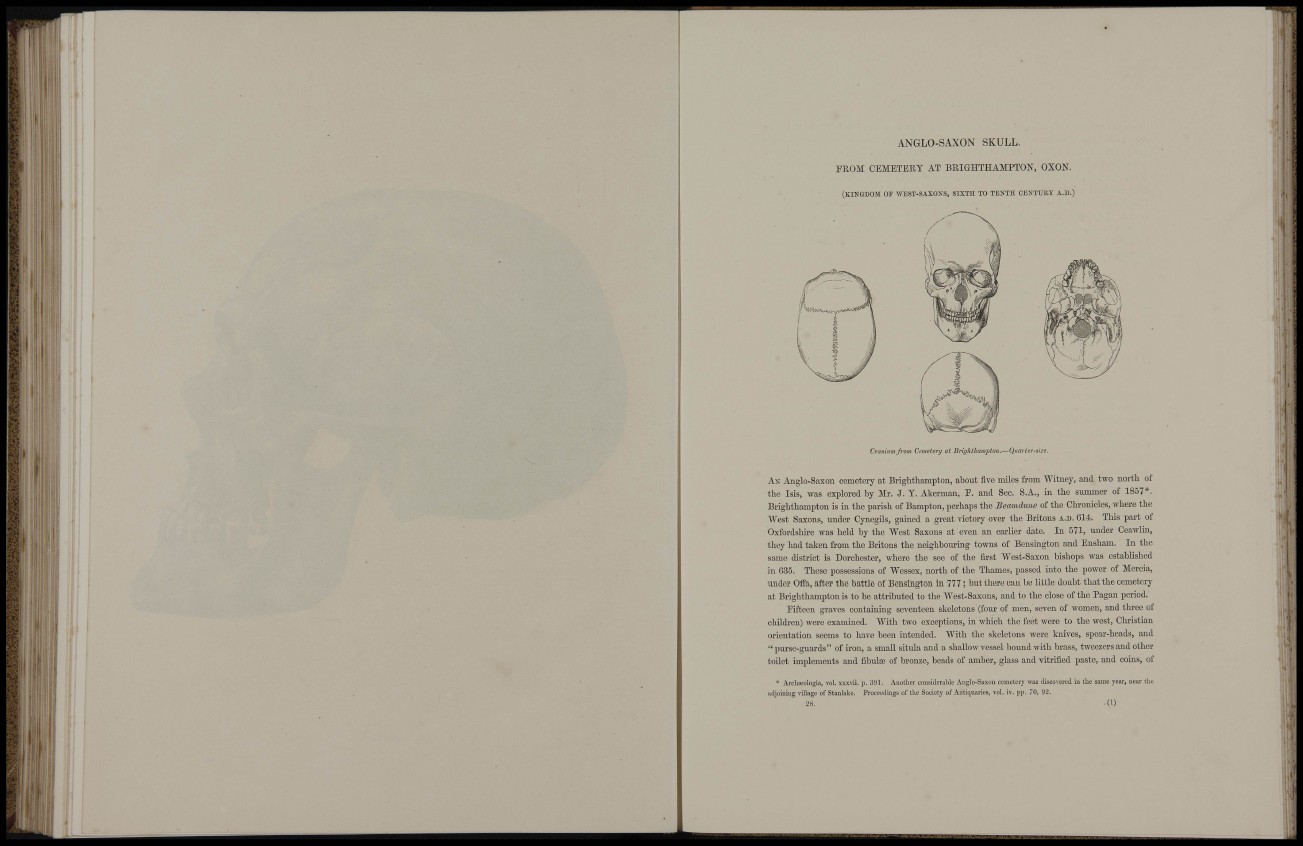
B. , , I 111 liii
m
p - : ,
m • '
m
I
' ; t
Iti
liiiiii
II r
A N G L O - S A X O N SKULL.
FROM CEMETERY AT BRIGHTHAMPTON, OXON.
(KINGDOM OF WEST-SAXONS, SIXTH TO TENTH CENTUIIY A.D.)
Craniutn from Cemetery at Briyhthain^ton.—Quarter-iii:e.
AN Anglo-Saxon cemetery at Brightliampton, about five miles from Witney, and two north of
the lais, was explored by Mr. J. Y. Akerman, E. and Sec. S.A., in the summer of 1857*.
Brighthampton is in the parish of Bampton, perhaps the Beamdune of the Chronicles, where the
West Saxons, under Cynegils, gained a great victory over the Britons A.D. 614. This part of
Oxfordshire was held by the West Saxons at even an earlier date. In 571, under CeawUn,
they had taken from the Britons the neighbom-ing towns of Bensington and Ensham. In the
same district is Dorchester, where the see of the first West-Saxon bishops was established
in 635. These possessions of Wessex, north of the Thames, passed into the power of Mercia,
under Offa, after the battle of Bensington in 777 ; hut there can he little doubt that the cemetery
at Brighthampton is to be attributed to the West-Saxons, and to the close of the Pagan period.
Fifteen graves containing seventeen skeletons (four of men, seven of women, and three of
children) were examined. With two exceptions, in which the feet were to the west, Christian
orientation seems to have been intended. With the skeletons were knives, spear-heads, and
" purse-guards" of iron, a small situla and a shallow vessel hound with brass, tweezers and other
toilet implements and fibulas of bronze, beads of amber, glass and vitrified paste, and coins, of
* Archojologia, vol. xxxvii. p. 391. Another considerable Anglo-Saxon cemetery was discovered in the same year, near the
adjoining village of Stanlake. Proceedings of the Society of Antiquaries, vol. iv. pp. 70, 92.
28. (1)
•Hi:
i
H
•Ii.i ?